At the opera the other night, I saw something I’d never seen before: the orchestra leaving its pit during the curtain call — and at a rather specific point, too, when the singer playing the lead was walking out for her solo curtain call. (And no, that’s not a picture of Brünnhilde; it’s Frank Gorshin as the Riddler on the old Batman show.) Why would they have done such a rude and unprofessional thing? I cannot say for sure, but my guess would be that it was for the same reason the audience members in my part of the balcony stopped yelling “Bravo,” sat down, and engaged in golf claps when she appeared.
It wasn’t because she didn’t have a marvelous voice; far from it, as she had demonstrated in Act III. She’s world-famous for playing this role. Unfortunately, in anticipation of Act III, she had not sung full voice in Act II. As a result, the Valkyrie most closely associated with belting out the notes was barely audible past the tenth row for a good hour.
Did she have a sore throat? Had she lost her nerve? Or did she merely figure that this was Seattle, not New York or Berlin, so she could afford to phone in half of her performance?
Performance anxiety, medical excuse, or apathy — we in the audience will never know. All we can judge her by is how she sang.
Performance anxiety is on my mind today, campers, because I’m going to be concentrating in this post upon the delicate art of working up nerve to approach agents to pitch. And — brace yourselves — to start to think of the pitching process as your interviewing agents as much as their interviewing you.
Okay, perhaps not quite as much, given just how competitive the agent-finding market is these days, but certainly, it’s not a face-to-face meeting to approach uncritically. As, alas, the vast majority of pitchers — and queriers, for that matter — seem to do.
Oh, I’m not saying that it isn’t understandable — undoubtedly, it is. In the flurry of pitching and querying, signing with an agent can start to feel like the end goal, the point at which all of the hard work is going to end, rather than a victory to be celebrated along the way. Yes, you do want an agent to fall in love with your writing — but never forget that the point of having an agent is to market your book.
Before an army of Valkyries shouts, “Well, duh!” at me at a volume certain divas would have done well to emulate, allow me to add a spin to that observation that may not have occurred to some pitchers: since a pitch meeting is a professional encounter, not a social event, it is very much in your interests to consider whether the person in front of you is a good bet for helping you meet your ultimate goal of publication, rather than whether you happen to like this person.
There’s more to an agent-writer relationship than friendship, you know. In fact, that’s often a relatively small element. Obviously, you’re going to want to be able to trust your agent, but whether the two of you clicked during your ten-minute chat is far less important to how well you will work together than your ability to communicate — and, yes, the agent’s contacts with editors who happen to publish books in your category.
So the common writerly fantasy that a friendly pitch meeting automatically equals a long-term personal connection is not only seldom true in actual practice; it can lead aspiring writers do make foolish choices. “Oh, but I really clicked with Agent Z,” they will protest. “I couldn’t possibly submit those pages Agent Q requested until I hear back from Z.” Or: “Since I had such a great pitch session with Agent R, why should I bother to pitch to anyone else at this conference? He’s sure to sign me.” Or even: “Yeah, it’s been 10 months since I submitted those pages Agent B requested, but I’m not going to keep querying or contact the agency to see if they have lost my submission packet. She seemed to like me; I don’t want to mess that up.”
All of these are poor strategic choices, based upon a misunderstanding of the pitching relationship. Successful pitchers’ hopes often rise sky-high, leading them to confuse a request for pages for an implied commitment. It isn’t, and it shouldn’t be interpreted as such.
Far too few pitchers seem to understand that. Here’s a useful rule of thumb: until an actual offer is on the table, a good pitch meeting is just a nice conversation at a conference.
But even if a smiling request for materials did imply more (which it doesn’t), the mere fact of liking an agent personally is not the best determinant of whether this is the right person to represent your manuscript. Or even whether the two of you can work well together under stressful conditions.
Yes, I said work together, because believe me, the author’s work does not end when the ink dries on the agency contract: its nature merely changes. It’s rare that a manuscript or proposal does not go through at least some revisions after the agency contract is signed, generally at the new agent’s request. So before you think about committing your manuscript or proposal to anyone’s hands, you’re going to want to ask some questions about who these people are, what they typically represent, and how they like to work with writers.
Stop cringing — if you’re going to be a successful author, this is CRUCIAL information.
Why? Well, agenting styles are very different: some are very hands-on, line-editing the work they represent, and some prefer to, as the saying goes, “leave the writing to the writers.” Some enjoy explaining the publishing process to their clients, and some are infuriated by it. Some want their authors to check in regularly, while others roll their eyes if a client has the temerity to inquire whether the manuscript the agent sent out six months ago has met with any results yet.
It really does behoove everyone concerned, therefore, that such preferences be aired up front.
I know: a pitch meeting is an intimidating situation, and you don’t want to offend anybody. But remember, these people come to a conference to discover people like YOU. Don’t talk yourself out of approaching them. Yes, the deck is stacked, but that does not mean that it’s impossible to make it: writers find agents at conferences all the time.
Including, incidentally, yours truly. After asking simply mountains of very pointed questions. Hey, I was merely being honest about the kind of client I would be.
Fortunately, you need not wait until your pitching appointment or you have buttonholed an agent in the hallway to ask such questions: most writers’ conferences feature panels where agents and editors talk about their work. Almost universally, the moderator will ask for questions from the audience.
That prospect should make you start rubbing your hands in glee like the villain in a melodrama: here’s a risk-free chance to ask many agents at once about what they like in a book — and in a client.
It’s a golden opportunity, yet much of the time, it’s is squandered with the too-specific question of the conference newbie who thinks this is an invitation to pitch. “Would you be interested,” such a fellow will stand up and ask, “in a book about a starship captain who finds himself marooned on a deserted planet where only mistletoe grows, and his only chance of escape is to court the ancient Druidic gods?”
Now, personally, I would probably want to take a gander at that particular book, if only for giggles, but that’s not really the issue here: this guy is trying to give a mass pitch to everyone on the panel. Universally, this kind of approach-disguised-as-question falls flat on its face.
Why? Manners, my dears, manners. Question time at an agents’ forum is NOT an appropriate venue for pitching.
Let me repeat that, as it may sound a bit strange coming from the fingertips of the queen of the hallway pitch: the agents’ and editors’ forums should NOT be construed as pitch sessions. You may, if you can work up the nerve, walk up to the panelists afterward to try out your hallway pitch, but you will make a much, much better impression if you use the question time for, um, questions.
Still not convinced? Okay, let’s take a gander at what happens when our misguided friend above ignores this dictum — as, I assure you, someone invariably does at every major conference. If the agents are feeling kind, one of them will try to turn this too-specific question into an issue of more general concern, as in, “It’s interesting that you ask that, because the SF market right now is very much geared toward (some other focus entirely)…”
The other, less charitable and more common response is for the agents all to say no and the moderator to ask for the next question from the audience. Like hallway pitching, the response all depends upon the mood and generosity level of the agents approached — and how politely the writer has made the request.
Even if you are Emily Post personified, however, don’t bother with the broadcast pitch approach: it’s not worth the risk. Most likely, the only result will be your getting talked about negatively in the bar that’s never more than 100 yards from any writers’ conference in North America. Trust me on this one.
A popular variation on this faux pas is a questioner’s standing up, describing his book, and asking how much he could expect to receive as an advance. From the writer’s point of view, this certainly seems like a reasonable question, doesn’t it? Yet to industry-trained ears, it says very clearly that the asker has not gone to the trouble of learning much about how publishing actually works.
Why is that so evident to the pros? Well, in the first place, advances vary wildly. Think about how deal memos are constructed: pretty much everything that has to do with the author’s cut is a matter of negotiation. (If you have no idea what a deal memo is, you might want to take a gander at the HOW DO MANUSCRIPTS GET PUBLISHED? category on the archive list at right. Even aspiring writers who have done their homework often harbor misconceptions about how the process works.)
Second, a manuscript that attracts competitive bidding today may not interest any editor at all six months from now. So really, when an aspiring writer asks such a question, what an agent tends to hear is, “I want you to predict the market value of a book you know absolutely nothing about, which may or may not be any good, and I expect this advice to be applicable at any time I may try to market this book concept.”
Again: not the best idea.
So how does one use question time correctly, you ask? You’re going to want to keep your question general and, if at all possible, have everyone on the panel answer it, so you don’t appear to be targeting one of them for critique.
Oh, it happens. It’s pretty to see how quickly agents — who, after all, are in competition with one another just as much as writers are — will rush to defend one of their own.
Another common faux pas is to challenge what an agent on the panel has already said. Often, the writers who go this route will cite another source, for added credibility, “You said X ten minutes ago, but Miss Snark says…”
If you take nothing else I say into the Q&A session, remember this: this type of question will not help you win friends and influence people.
Why? Well, no one particularly likes to be contradicted in front of a roomful of people, right? Being told that someone out there is laying down rules of her conduct is far more likely to raise hackles than provide clarification. Human nature, I’m afraid.
And it’s not as though the average agent reads the many writing blogs out there, even if she happens to write one herself. So any name you cite — up to and including Miss S’, who even at the height of her blog’s popularity enjoyed at best a mixed reputation amongst agents — is unlikely to seem like an unimpeachable source.
Although should you happen to bump into MY agent at a conference, you may certainly feel free to preface your remarks to him with, “I really like Anne Mini’s blog,” should you be so moved. As long, that is, as you did not add immediately thereafter, “…and she says that what you told us before is wrong.”
Trust me: as an opening gambit, it just doesn’t work.
So what should you ask that intimidating row of agents? A few suggestions that designed to elicit information you would probably have a hard time gleaning anywhere else — and will generally provoke interesting comments, rather than the usual bleak diagnoses of how tough the market is right now:
“What was the last book each of you picked up at a conference? What made that book stand out from the others you heard pitched?” I love this question, as it gives pitchers hints about how the agents like to hear a book described; darned useful information.
“Who is your favorite client, and why?” This is a question agents tend to love, as it enables them to promote a client’s work. Make a great show of writing down names, nodding vigorously to indicate that you either believe that the author mentioned is the best thing to happen to literature since Homer first got the idea of telling the story of the Trojan war or that you are intending to rush to the nearest brick-and-mortar bookstore the instant the conference is over and buy all of that author’s books.
Hey, agents make a living from their clients’ royalties. You think they DON’T mention their clients at conferences partially in order to stimulate some book sales?
“How long do you stick with a book you really love that’s not selling before you give up on it?” In many ways, this is the single most important thing to know about an agent with whom you’re considering signing — and it’s an agent-friendly question, because they almost invariably answer it by talking about a pet project that was hard to place, but eventually succeeded.
Word to the wise: while it’s tempting to be impressed by the story about how the agent showed a particular manuscript to 43 agents before it got picked up, it’s worth asking the follow-up question, “Is that your regular practice, or did you especially love that book?” It’s not unheard-of for an established agent to recycle a single heroic incident from the very beginning of his career throughout a couple of decades’ worth of writers’ conference panels. What he was willing to do for the best manuscript he ever read back in 1982 isn’t necessarily indicative of how he might handle your book now.
“If I were looking to understand what a great first novel (or first book in your chosen category) would read like from an agent’s point of view, what books recently out would you suggest I read?” Another question that tends to be popular with panelists — because, trust me, no agent on earth is going to name a book that s/he DIDN’T represent.
“How is selling a first-time author’s book different from selling the work of someone more established?” They’ll like this question less, but it will give you a pretty good idea of who has sold a debut novel lately and who hasn’t.
“Are you looking for a career-long relationship with a writer when you consider a submission, or are you only thinking about the book in front of you? If you thinking in the long term, how often do you expect your clients to produce new books?” This last varies a LOT, but in the last year or so, many fiction agents have been on the look-out for career writers, rather than those with only one great book in them. Asking panelists this question will let you know to whom to mention the other three manuscripts you have sitting in a drawer.
“How much feedback do you give your clients before you submit their books? Do you usually ask for a revision before you send a book out? How much do you like to get involved in the revision process?” Yes, this is an enormous question, but the agents who never edit at all will usually say so immediately. Translation: they don’t like to take on unpolished manuscripts, even if they have great market potential.
“Is there any kind of book you specifically do NOT want to hear pitched this weekend?” Hey, someone’s got to pull the pin on that grenade. Sometimes they will answer this question unsolicited, however, so do keep an ear out during the forum.
What was the last book you picked up from a conference pitch and why? What made that pitch stand out to you? The benefits of this question are twofold: it will enable agents to gush about clients whose books have not yet been released (always fun for them), and you might just glean a pitching tip or two.
Do be aware, however, that some agents will respond defensively to this type of question, disliking the implication that they might EVER sign a writer without having read the manuscript in question. The usual deflecting response: “Well, I don’t really judge by the pitch; it all depends upon the writing.”
“I’ve been hearing that many of the big agencies employ submission screeners. How many other people need to read a submission before it will reach your desk — and what kinds of comments to you like to see from them?” It can be difficult to get an answer to this question — some agents who normally employ screeners pride themselves on reading requested materials from pitchers themselves — but it can reveal quite a lot about the unwritten rules of screening.
“What’s the worst query letter you ever got, and why?” This is a great question to ask if you’re not planning to do any hallway pitching, but only intend to query the attending agents after the conference. (Beginning your query, naturally, with the magic words, “I so enjoyed hearing you speak at the recent XYZ conference…) The responses are usually pretty colorful.
Do you have any automatic red flags for submissions? Any pet peeves we all should avoid? You are well within your rights to ask this one — and everyone in the room will bless you for it. Every agent has a different representation style, and you will want to know about any pet peeves or preferences before you stick your pages under their respective noses, right?
Fair warning about the response to this one: it’s very, very common for agents to imply that their individual pet peeves are shared by every other agent currently walking the earth’s crust. Sometimes it’s true; sometimes it isn’t.
However, should you EVER hear an agent mention a pet peeve on a panel, scour your work for that problem before you send that agent anything. If an agent makes the effort to warn you, s/he means it.
You’ll be pleased to hear, after all that, that there is really only one question that someone absolutely needs to ask at the editors’ forum — although most of the questions above will work in this context, too. Since most publishing houses now have policies forbidding their editors from picking up unagented work, everyone in the room will be happier in the long run if you just pull the pin on the grenade:
“If you found a fabulous book here at the conference, which of you could sign the author directly, and which of you would have to refer her to an agent?”
Yes, it’s a bit in-your-face, but the fact is, all of the major US publishing houses currently have policies forbidding editors from signing unrepresented writers — a policy of which editors tend to assume that pitchers are already aware. So much so that editors new to conferences are sometimes surprised that writers want to pitch to them. Often, senior editors are at the conference merely to give a class, network, or make connections with the already-established authors that often hang out at their local conferences; they may only have agreed to participate in pitch meetings to fill the time in between. (Hey, it happens.)
Asking to know whether you’ll be pitching to someone who could act directly or not can help you streamline your pitching attempts. Generally speaking, an editor from a small publishing house is more likely to be able to say yes to a manuscript, but if, for instance, an editor at HarperCollins is given to perusing its online competitive submission site, asking about direct submissions will probably elicit that information.
These questions will also help you decide to whom to pitch (in the hallways, probably) on a more professional basis than whether the agent or editor struck you as a nice person whilst speaking on the dais. This is not the best criterion to use, and certainly not the best ONLY criterion to use, because:
(a) Most people are rather different when speaking to large groups than one-on-one, which is how a signed writer would be dealing with them; your first impression might not be an accurate one.
(b) Agent and editor fora tend to be rather early in the morning, and folks in the arts are often not morning people (see conclusion on previous point).
(c) The pro who comes across as nastiest may in fact just be trying to save writers some chagrin. Telling the hard truth from a podium is not usually conducive to popularity, but the truth about the publishing industry is what you paid to come to the conference to hear, right?
(d) The pro who just oozes affection for writers and good writing may not have the best track record for picking up clients.
Finding out more about these people’s personal tastes and professional interests is also just good manners — and this is an industry where manners do count to a surprisingly great extent. From a more self-interested perspective, wouldn’t you rather learn in an impersonal forum that Agent A isn’t remotely interested in your kind of book than during a face-to-face, one-on-one meeting?
Of course you would. See why I was so adamant about your picking a book category?
Once you have figured out which agents and editors from small houses (again, all of the major US publishers currently have policies against picking up unagented authors) represent books in your category and like your type of voice (not always the same thing, in practice), try to get appointments with ALL of them.
Standing by the appointment desk and listening for cancellations is a good way to do this — although fair warning: this practice does tend to annoy the volunteers manning the appointment desk. Also, many conferences lay down rules barring signing up for extra appointments (unless you pay for them). However, even at such conferences, the eager beaver who happens to be standing by the desk when someone cancels can sometimes nab the extra slot.
A great, great time to do this: immediately after the agents’ forum. Would-be pitchers who have just heard their assigned agents declare from the dais that the appointment was a mismatch are often overjoyed to switch appointments with someone else, or even just cancel their own.
If you can’t get appointments, try to pitch to your likely candidates in the hallways. Again, immediately after the agents’ forum is an opportune moment for this.
I felt your chest seize up, but please, don’t be afraid: you’re there to learn how to market your work better, and they are there to pick up new writers. You are not a second-class citizen begging the nobility for a favor, as so many first-time pitchers seem to think: you are trying to find the best collaborators for your writing career.
As Francis I of France put it: “The sun shines for me as for others. I should very much like to see the clause in Adam’s will that excludes me from a share of the world.”
You deserve to be heard, in short. Don’t let ‘em intimidate you.
But if you DO find yourself too intimidated to walk up to someone in the industry and gasp out your magic first hundred words, do not despair: that information you gathered at the agents and editors’ forum will still serve you well. After the conference, you can query ALL of them — or at least the ones on your narrowed-down list.
And do you know what I would do in your quivered-in shoes? (Hint: I mentioned it above.)
If you said, “By Jove, you would go ahead and write the name of the conference on the outside of the envelope or put it in the subject line an e-mailed query,” give yourself a gold star for the day.
Why is this a dandy idea? Because in most agencies, conference-goers are regarded as a bit savvier than the average querier; their queries, therefore, tend to be taken a bit more seriously AND read with greater attention. So it’s well worth your while.
Oh, and before I forget: make sure to write REQUESTED MATERIALS in great big letters on the outside of the envelope or place it in the subject line of your e-mail, for the reasons above. (Assuming, of course, that an agent or editor DID request those materials. Don’t scrawl it otherwise.)
But whatever you do, don’t be a silent wallflower at a writers’ conference: take a few polite risks, and don’t be afraid to approach editors from smaller presses. The Brünnhilde who perpetually saves her voice for the final act has a hard time making a good first impression.
Sing out, Hildy. This could be your big break.
Tomorrow, a few hints on maintaining your energy throughout what can be a pretty exhausting event. Keep up the good work!



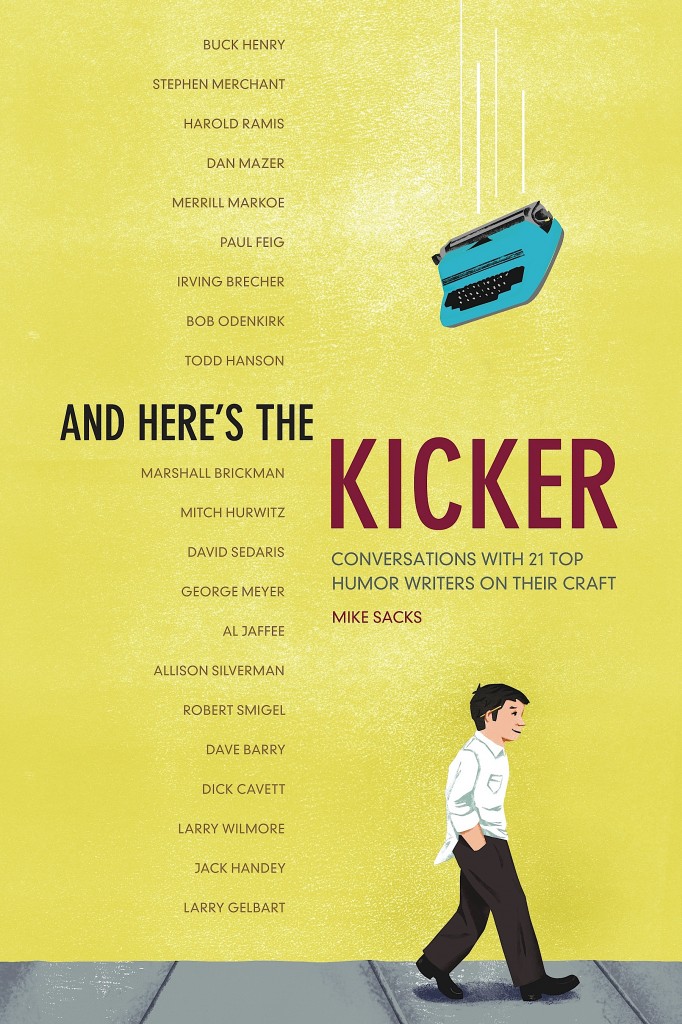







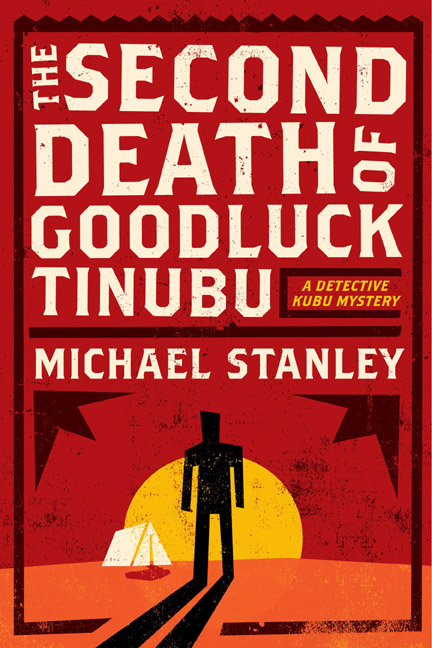
 Those of you who were hanging around the Author! Author! virtual lounge may remember Stan from last year, when he was kind enough to visit with
Those of you who were hanging around the Author! Author! virtual lounge may remember Stan from last year, when he was kind enough to visit with 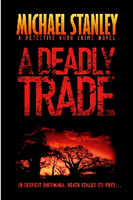 How can a man die twice?
How can a man die twice?
 Michael Stanley is the writing team of Michael Sears and Stanley Trollip.
Michael Stanley is the writing team of Michael Sears and Stanley Trollip. 



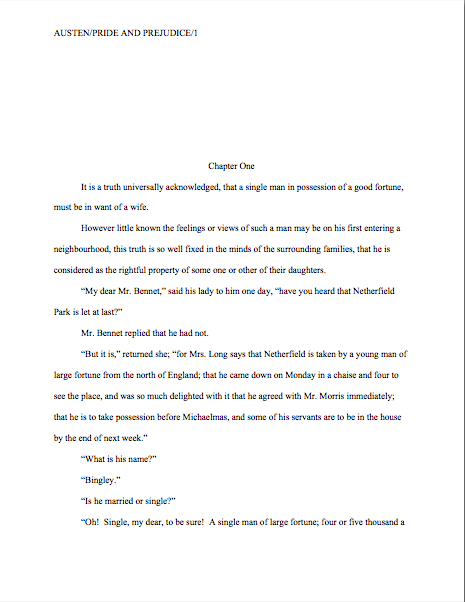



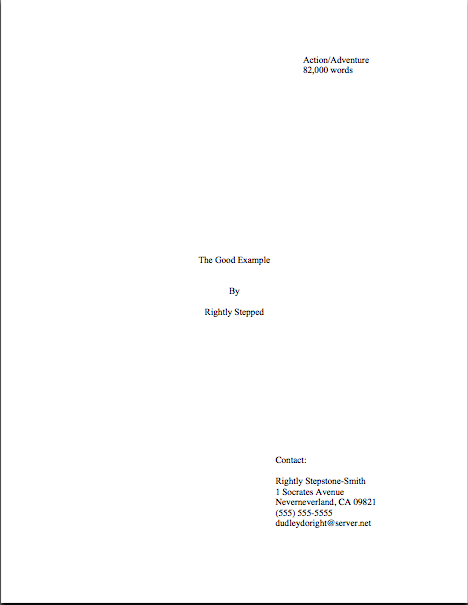



















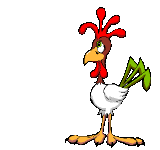 PS: don’t forget to tune in on Friday for our end-of-the-week treat!
PS: don’t forget to tune in on Friday for our end-of-the-week treat!
 PS: yes, I know that this series has been long and dense, but I have a fabulous reward in store for you at the end of it: a guest post from an author I’ve been eager to get here to talk to you for a very long time. Hint: he’s funny, and appropriately for the season, there will be small, fluffy animals involved.
PS: yes, I know that this series has been long and dense, but I have a fabulous reward in store for you at the end of it: a guest post from an author I’ve been eager to get here to talk to you for a very long time. Hint: he’s funny, and appropriately for the season, there will be small, fluffy animals involved.





